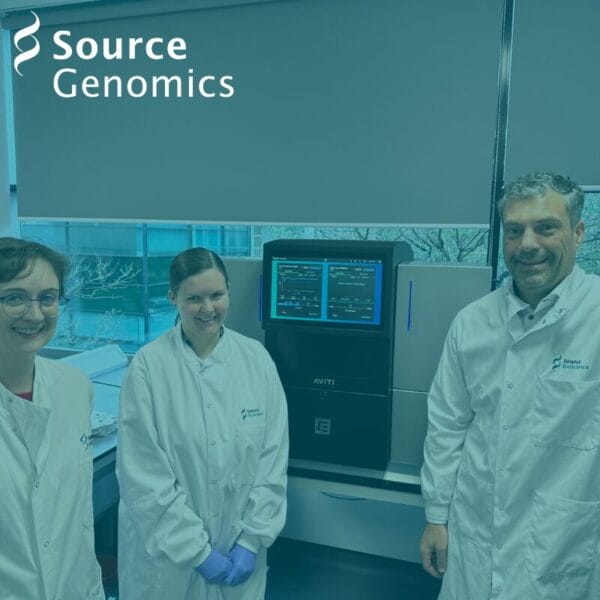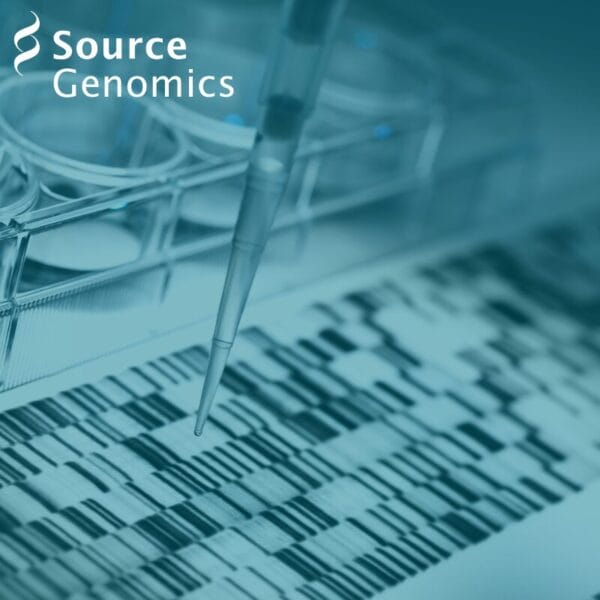Comparing RNA Sequencing Techniques
RNA sequencing is becoming the gold-standard method for uncovering the cellular mechanisms behind disease. A variety of RNA sequencing techniques have evolved, which provide all-important information on disease causes and progression for more effective treatments.
The revolution of RNA sequencing
To understand complex diseases, we need to link genotypes to phenotypes. This requires an in-depth analysis of the dynamic interplay between DNA sequencing and the corresponding patterns of RNA expression. While traditional methods such as microarray assays have provided invaluable insights, RNA sequencing overshadows historic techniques in its ability to drive forward large-scale research. It is now the most robust and effective method for measuring and understanding gene expression and transcription.1 It provides more precise, higher resolution readings and has a larger detection range, enabling the study of novel transcripts .1
RNA-sequencing complements other types of genomic analysis throughout research, using the genotype-phenotype link to give us an increased understanding of functional genomics, gene regulation and disease mechanisms. Unlike Whole Genome Sequencing (WGS), which offers static observations of genetic and regulatory material, RNA sequencing captures dynamic changes in gene expression in response to specific stimuli, allowing researchers to study gene expression patterns across different experimental conditions.
The use of RNA sequencing has proven particularly valuable for the discovery of biomarkers and for increasing our understanding of the molecular mechanisms governing diseases.2 By combining RNA-seq data with WGS data, researchers can pinpoint genetic variants linked to altered gene expression, which can then be studied as a potential diagnostic or therapeutic biomarker. Many RNA-sequencing techniques have been developed to optimally study the transcriptome in various experimental conditions and research questions; these RNA-seq techniques will be discussed below.
Total RNA sequencing
Total RNA sequencing transcribes all the RNA within a tissue sample, allowing investigation into both coding and non-coding regions that might participate in DNA regulation and interference. Once the target sample has been isolated, total RNA sequence data is converted directly into complementary DNA, providing a full RNA catalogue. During library preparation ribosomal RNA is usually removed as it can derail the detection of the most desirable transcripts, especially when working with formalin-fixed samples.2
Total RNA sequencing is central to medical research, particularly in understanding the mechanisms behind skin disorders. For example, total RNA sequencing detected missense mutations in the SF3B1 spliceosome gene and the resulting RNA-splicing abnormalities that cause uveal melanoma development.3,4
Transcriptome sequencing
Transcriptome sequencing documents the RNA transcribed in a sample at a particular developmental stage, or cell state, revealing the structure and function of certain genes. Transcriptome sequencing does not account for non-coding regions of RNA and focuses exclusively on mRNA. This RNA sequencing technique provides an understanding into which genes are being over-/under-expressed under different conditions, enabling the identification of novel transcripts.5
Transcriptome sequencing is key in studying rare genetic diseases. Using RNA-seq to study the transcriptome alongside WGS significantly increases the success of diagnosis for rare Mendelian diseases.6 Earlier diagnosis of autosomal diseases like Machado-Joseph disease (SCA3) has been made possible thanks to transcriptome sequencing identifying five genes (AFB2, SFSWAP, LTBP4, MEG3 and TSPOAP1) as important biomarkers.7
Single-cell RNA sequencing
Single cell RNA (scRNA) sequencing is essential in revealing the heterogeneity and complexity of RNA transcripts in individual cells. It provides invaluable information on different cell type composition, identity, state, function and response within tissues, organs and organisms. Using scRNA sequencing it is now possible to analyse the cellular transcriptomes of millions of cells in a single assay, allowing for the discovery of rare, functionally important cell populations.8
scRNA sequencing is a powerful tool in solving the mysteries of cell composition and function in disease, providing great insights into tumor progression. Distinguishing between functioning and non-functioning cancerous cells at different developmental stages, scRNA sequencing facilitates more precise prognosis and diagnosis. scRNA sequencing provides information about treatment-resistant cells present in tumors, enabling the appropriate therapies to be administered based on the type of tumor and the individual patient.9
Small RNA sequencing
Small RNAs play a vital role in cell development and viability in relation to mechanisms such as splicing, RNA modification, translational arrest, and mRNA degradation. Previously, small RNA sequencing was limited because the technique required a large amount of cell material. Thanks to new ligand-based technologies, small RNA sequencing is now much more plausible.10
Small RNA sequencing has expanded our knowledge about how small RNAs regulate cells and how pathological conditions disrupt this. For example, small RNA sequencing was used to uncover the role of dysregulated piRNAs in the pathogenesis of Alzheimer’s disease, providing a basis for future research into piRNAs function in brain associated diseases.11
With this vast array of RNA sequencing techniques, studying and understanding human disease for more effective treatments is becoming much more plausible and RNA sequencing is shaping modern medicine. To learn more about how Source Genomics can help accelerate your research with RNA-seq services, get in touch today.
References
- Corchete, L.A., Rojas, E.A., Alonso-López, D., De Las Rivas, J., Gutiérrez, N.C. and Burguillo, F.J. 2020. Systematic comparison and assessment of RNA-seq procedures for gene expression quantitative analysis. Scientific reports. 10(1), p.19737.
- Whitley, S.K., Horne, W.T. and Kolls, J.K. 2016. Research techniques made simple: methodology and clinical applications of RNA sequencing. Journal of Investigative Dermatology. 136(8), pp.e77-e82.
- Alsafadi, S., Houy, A., Battistella, A., Popova, T., Wassef, M., Henry, E., Tirode, F., Constantinou, A., Piperno-Neumann, S., Roman-Roman, S. and Dutertre, M. 2016. Cancer-associated SF3B1 mutations affect alternative splicing by promoting alternative branchpoint usage. Nature communications. 7(1), p.10615.7
- DeBoever, C., Ghia, E.M., Shepard, P.J., Rassenti, L., Barrett, C.L., Jepsen, K., Jamieson, C.H., Carson, D., Kipps, T.J. and Frazer, K.A. 2015. Transcriptome sequencing reveals potential mechanism of cryptic 3’splice site selection in SF3B1-mutated cancers. PLoS computational biology. 11(3), p.e1004105.
- Zhang, H. 2019, October. The review of transcriptome sequencing: principles, history and advances. In IOP conference series: Earth and environmental science (Vol. 332, No. 4, p. 042003). IOP Publishing.
- Lee, H., Huang, A.Y., Wang, L.K., Yoon, A.J., Renteria, G., Eskin, A., Signer, R.H., Dorrani, N., Nieves-Rodriguez, S., Wan, J. and Douine, E.D. 2020. Diagnostic utility of transcriptome sequencing for rare Mendelian diseases. Genetics in Medicine. 22(3), pp.490-499.
- Raposo, M., Hübener-Schmid, J., Ferreira, A.F., Vieira Melo, A.R., Vasconcelos, J., Pires, P., Kay, T., Garcia-Moreno, H., Giunti, P., Santana, M.M. and Pereira de Almeida, L. 2023. Blood transcriptome sequencing identifies biomarkers able to track disease stages in spinocerebellar ataxia type 3. Brain. p.awad128.
- Jovic, D., Liang, X., Zeng, H., Lin, L., Xu, F. and Luo, Y. 2022. Single‐cell RNA sequencing technologies and applications: A brief overview. Clinical and Translational Medicine. 12(3), p.e694.
- Guo, M., Peng, Y., Gao, A., Du, C. and Herman, J.G. 2019. Epigenetic heterogeneity in cancer. Biomarker research. 7(1), pp.1-19.
- Hagemann-Jensen, M., Abdullayev, I., Sandberg, R. and Faridani, O.R. 2018. Small-seq for single-cell small-RNA sequencing. Nature protocols. 13(10), pp.2407-2424.
- Roy, J., Sarkar, A., Parida, S., Ghosh, Z. and Mallick, B. 2017. Small RNA sequencing revealed dysregulated piRNAs in Alzheimer’s disease and their probable role in pathogenesis. Molecular BioSystems. 13(3), pp.565-576.
Contact us today and one of our skilled account managers will be in touch with a free consultation including further information and pricing details.
Share this article

